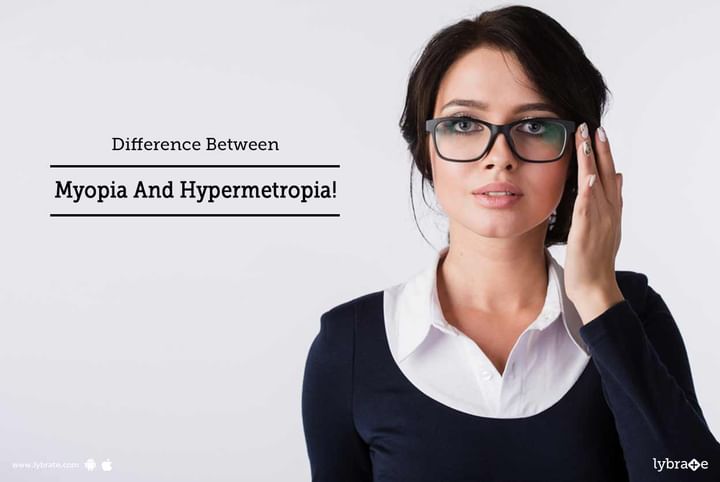Difference Between Myopia And Hypermetropia!
While Myopia and Hypermetropia are refractive defects in vision, they are diametrically opposite in nature. The former is about distant vision problems while in the latter, you have trouble with nearby objects.
Both are common eye conditions that mainly occur when light does not focus on the retina of the eyes.
Myopia-
Also called nearsightedness, in this condition a distant object is not easily discernible. There is no problem while looking at closer or nearby objects. This is because light gets focused onto the front portion of the retina rather than onto it. Due to this, things in the distance appear fuzzy or blurred.
The retina, located at the back of the eye, is the screen upon which the lmage/light reflection falls. The light is then converted into electrical signals and sent to the brain. The brain then decoded these images.
A myopic or nearsighted eye has incorrect focus because of its abnormal shape. Sometimes it is too long, while sometimes the cornea (the transparent covering on the front of the eye which is rounded) itself is rounded.
Hypermetropia-
Hypermetropia or farsightedness is a condition when you can see distant objects clearly but nearby objects appear blurred.
A flat cornea is a major cause of farsightedness. This can also happen if your eyeball is shorter than normal. Because of this, light focuses beyond your retina instead of on it.
Symptoms-
Signs of nearsightedness are-
- Headache
- Squinting of the eyes
- Eyes that hurt occasionally
- Children have problem seeing the blackboard
The signs of farsightedness are-
- Squinting while trying to see better
- Aching or burning feeling in the eye
- Headache or too much stress on the eyes while focusing on something close
Diagnosis and Treatments-
An Optometrist can correct both myopia and hypermetropia by advising patients to use prescription glasses or contact lenses specifically designed to counteract these abnormalities.
For shortsightedness, a minus powered concave lens (curved inwards) is used which is placed in front portion of the myopic eyes and the image is gradually moved back to the retina. As a result, the image clarifies. Some patients use contact lenses that provide clearer and wider vision glasses.
For long-sightedness, a convex lens (bend outward) is placed in front of a hypermetropic eye and the image is re-positioned to allow the image to focus correctly on the retina.
It is therefore, necessary to adhere to proper care and health standards to safeguard your health of your eye. Contacting a good eye doctor will enable you to determine which method will work the best, according to your own circumstances and condition.



+1.svg)
